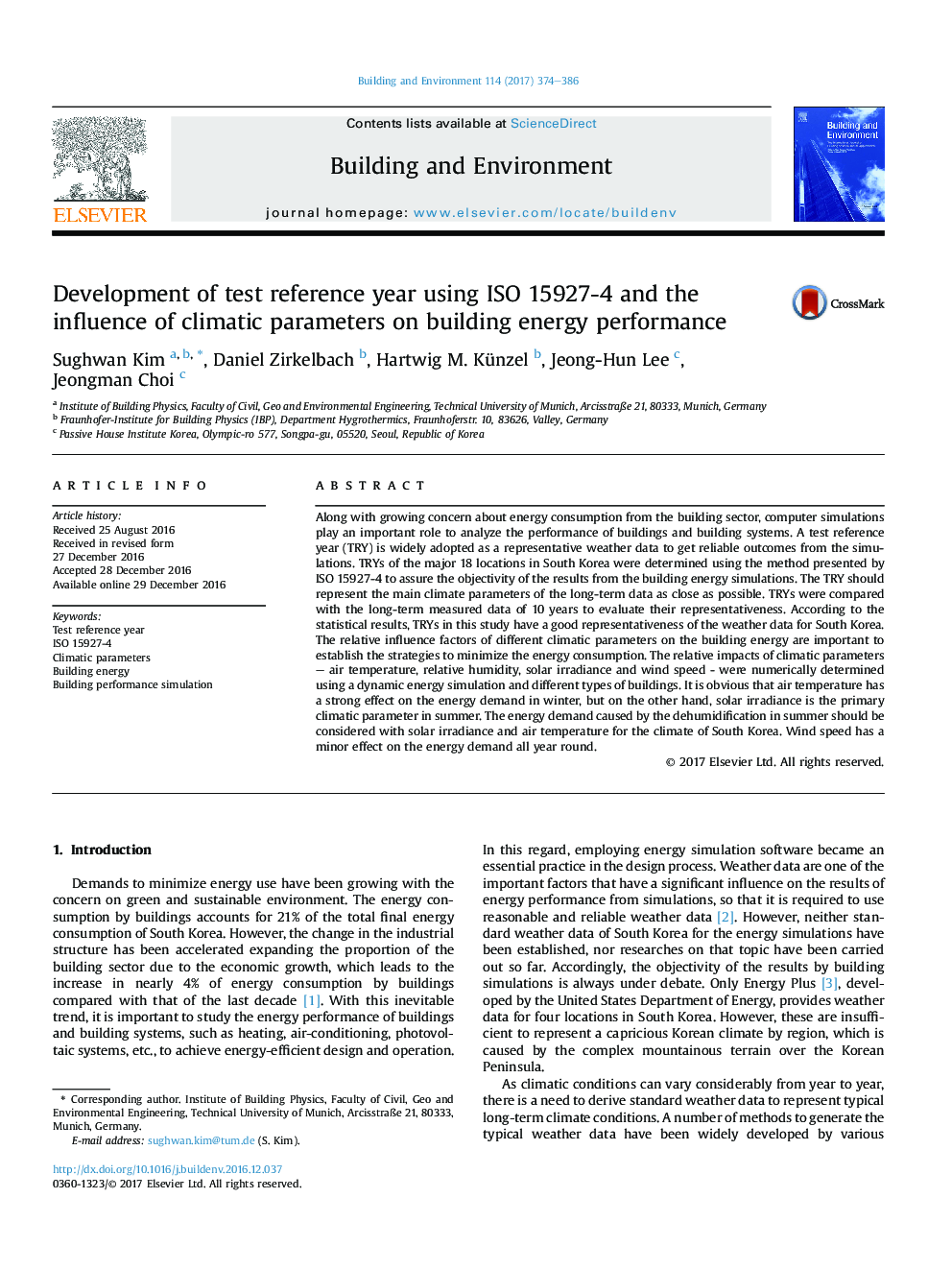| Article ID | Journal | Published Year | Pages | File Type |
|---|---|---|---|---|
| 4917431 | Building and Environment | 2017 | 13 Pages |
Abstract
Along with growing concern about energy consumption from the building sector, computer simulations play an important role to analyze the performance of buildings and building systems. A test reference year (TRY) is widely adopted as a representative weather data to get reliable outcomes from the simulations. TRYs of the major 18 locations in South Korea were determined using the method presented by ISO 15927-4 to assure the objectivity of the results from the building energy simulations. The TRY should represent the main climate parameters of the long-term data as close as possible. TRYs were compared with the long-term measured data of 10 years to evaluate their representativeness. According to the statistical results, TRYs in this study have a good representativeness of the weather data for South Korea. The relative influence factors of different climatic parameters on the building energy are important to establish the strategies to minimize the energy consumption. The relative impacts of climatic parameters - air temperature, relative humidity, solar irradiance and wind speed - were numerically determined using a dynamic energy simulation and different types of buildings. It is obvious that air temperature has a strong effect on the energy demand in winter, but on the other hand, solar irradiance is the primary climatic parameter in summer. The energy demand caused by the dehumidification in summer should be considered with solar irradiance and air temperature for the climate of South Korea. Wind speed has a minor effect on the energy demand all year round.
Related Topics
Physical Sciences and Engineering
Energy
Renewable Energy, Sustainability and the Environment
Authors
Sughwan Kim, Daniel Zirkelbach, Hartwig M. Künzel, Jeong-Hun Lee, Jeongman Choi,
